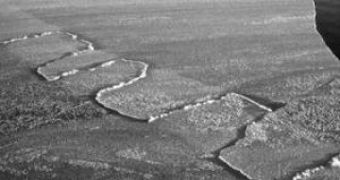A new Yale-Cambridge research reveals how ice sheets sometimes interlace when they shock, rather than overriding each other; researches assesses the implications of these phenomenon for other phenomena, from plate tectonics of the Earth's surface to the development of self-assembling nanostructures.
"A surprising pattern, much like the meshed teeth of a zipper, is frequently seen when floating ice sheets collide," said John Wettlaufer, professor of geology & geophysics and of physics at Yale.
The researchers proved the underlying principle for the pattern and came with suggestions of how it could be applied for any materials with similar physical traits of thickness and flexibility. "When two elastic sheets floating on a liquid collide, intuition leads us to expect one of two results - one sheet might be 'subducted' under the other, as we observe with the earth's crust, or the two might crush each other forming a field of rubble, as we observe in thick ice floes," said Wettlaufer.
The researchers investigated a third theoretical possibility in their analytic research and simulated ice sheets by employing flexible sheets of wax on water. The wax sheets formed a series of interlocking blocks, named "finger rafting", that alternately ride over and under one another, confirming the natural occurrence on ice sheets.
This phenomenon puzzled researchers for over 50 years. This natural pattern is similar to meter-wide rectangular zigzags, and appears only when both ice sheets are about the same thickness.
The researchers proved there is a link between the width of the resulting fingers and the material's mechanical properties. "We show that this striking observation is a general and robust mechanical phenomenon that we can reproduce in the laboratory with floating materials other than ice. Our experimental results were consistent with the field observations", said Wettlaufer.
This discovery could be applied in many technologies. "The same principles might be used for designing nanomachine gears from appropriate materials." added Wettlaufer. "Tuzo Wilson, one of the founders of the theory of plate tectonics, was inspired by the resemblance of structures on floating polar ice sheets to the transform faults and other features of the Earth's moving plates."

 14 DAY TRIAL //
14 DAY TRIAL //